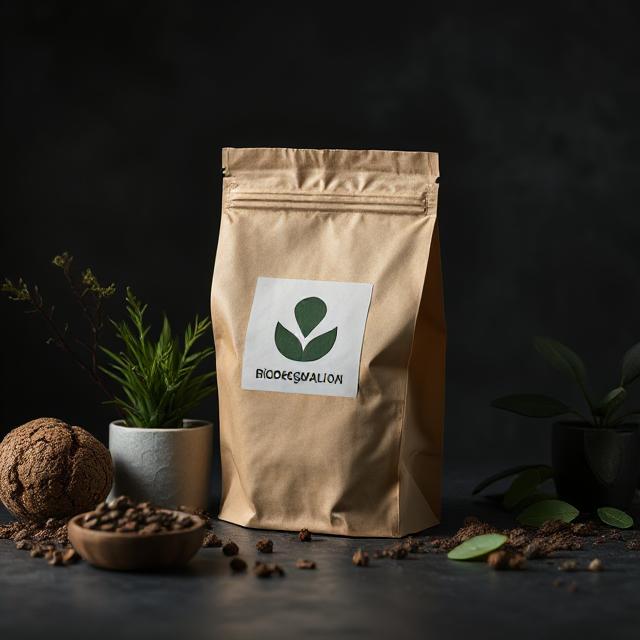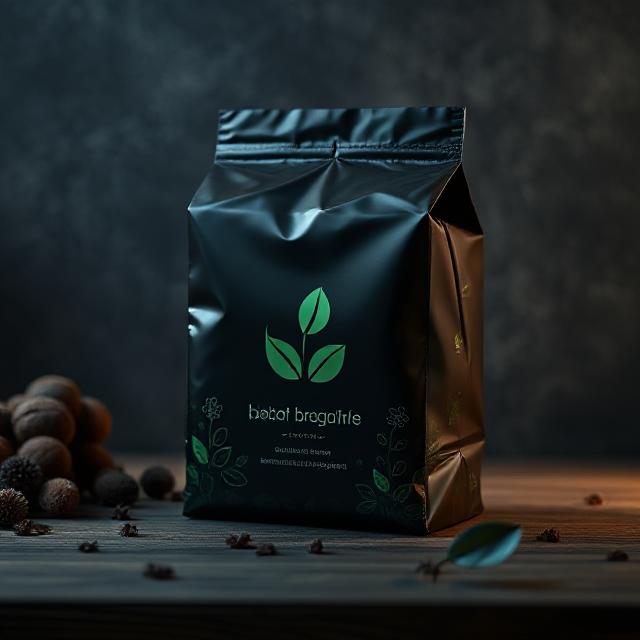Introduction
In an era where environmental consciousness and sustainable development dominate global discourse, the agricultural sector faces increasing pressure to reduce its ecological footprint. Among the key challenges is the use of traditional plastic packaging for agricultural products, which contributes significantly to environmental pollution. As a solution, two transformative innovations have emerged: biodegradable packaging and smart packaging. These technologies not only reduce waste but also enhance the safety, quality, and traceability of agri-products. This article explores the evolution, benefits, technologies, and challenges of biodegradable and smart packaging in agriculture, with a focus on their role in shaping a more sustainable food system.
The Need for Sustainable Packaging in Agriculture
The global agricultural supply chain handles massive quantities of produce, grains, dairy, meat, and processed foods. Traditional packaging materials like polyethylene and polystyrene offer durability and low cost but pose significant environmental risks:
- Plastic waste accumulation: Non-degradable plastics persist for hundreds of years, harming soil and marine ecosystems.
- Food safety concerns: Some packaging leaches harmful chemicals into food products.
- Post-consumer waste management: Agricultural regions often lack infrastructure to process or recycle packaging waste.
With climate change and consumer awareness on the rise, the agricultural sector is under pressure to adopt eco-friendly and intelligent packaging systems.
Biodegradable Packaging: Definition and Scope
Biodegradable packaging refers to materials that can decompose naturally by the action of microorganisms such as bacteria, fungi, and algae. Unlike conventional plastic, which remains in the environment indefinitely, biodegradable packaging breaks down into non-toxic components like water, carbon dioxide, and biomass within a relatively short time.
Types of Biodegradable Materials in Agri-Packaging
- Polylactic Acid (PLA): Derived from corn starch or sugarcane, PLA is commonly used in fresh produce trays and films.
- Starch-Based Plastics: Made from corn, potato, or tapioca starch; these are compostable and suitable for dry goods.
- Cellulose Films: Transparent, breathable, and biodegradable films derived from plant cell walls.
- Chitosan: A polysaccharide from crustacean shells; used as antimicrobial edible coatings for fruits and vegetables.
- Protein-Based Films: Derived from soy, whey, or gluten; used in biodegradable wraps and coatings.
Applications of Biodegradable Packaging in Agri-Products
1. Fresh Produce
Fruits and vegetables are commonly packaged using PLA clamshells, cellulose nets, or starch-based films to maintain freshness while allowing gas exchange and biodegradability.
2. Grains and Pulses
Biodegradable jute or paper bags replace plastic sacks for storing and transporting grains, reducing post-harvest contamination.
3. Dairy and Meat
Innovative protein-based or PLA containers help store cheese, milk, and meat products under refrigerated conditions, offering both food safety and environmental advantages.
4. Edible Coatings
Fruits like apples, bananas, and citrus are coated with chitosan or starch films that enhance shelf life and reduce spoilage.
Benefits of Biodegradable Packaging
- Environmental Sustainability:
- Reduced landfill waste
- Lower carbon emissions during production
- Compostable options improve soil health
- Consumer Appeal:
- Rising demand for eco-conscious products
- Market differentiation for organic and local farms
- Food Safety:
- Biodegradable films with antimicrobial properties reduce microbial spoilage
- Biodegradable films with antimicrobial properties reduce microbial spoilage
- Regulatory Compliance:
- Many countries are enforcing bans or restrictions on single-use plastics
Challenges of Biodegradable Packaging
- Cost and Scalability:
- Biodegradable materials often cost more than petroleum-based plastics
- Large-scale production remains limited
- Biodegradable materials often cost more than petroleum-based plastics
- Performance Limitations:
- Lower durability and shorter shelf life in extreme conditions
- Limited water and heat resistance
- Composting Infrastructure:
- Industrial composting facilities are lacking in many rural/agricultural areas
- Industrial composting facilities are lacking in many rural/agricultural areas
- Consumer Misunderstanding:
- Confusion between “biodegradable” and “compostable” may lead to improper disposal
Smart Packaging: The Intelligent Revolution
While biodegradable packaging addresses environmental concerns, smart packaging focuses on enhancing functionality, traceability, and food quality through embedded technology. Also known as intelligent packaging, it refers to materials integrated with sensors, indicators, and communication tools to interact with the food environment or supply chain.
Types of Smart Packaging Technologies
- Time-Temperature Indicators (TTIs):
- These color-changing labels monitor temperature fluctuations during storage and transport.
- These color-changing labels monitor temperature fluctuations during storage and transport.
- Freshness Indicators:
- Detect gases like ammonia, ethylene, or hydrogen sulfide to signal spoilage.
- Detect gases like ammonia, ethylene, or hydrogen sulfide to signal spoilage.
- RFID and QR Codes:
- Facilitate product tracking, traceability, and real-time data access.
- Facilitate product tracking, traceability, and real-time data access.
- pH Indicators:
- React to changes in food pH, indicating microbial activity or chemical spoilage.
- React to changes in food pH, indicating microbial activity or chemical spoilage.
- Gas Scavengers and Emitters:
- Absorb excess oxygen or emit CO₂ to modify the internal environment and extend shelf life.
Applications of Smart Packaging in Agri-Products
1. Fruits and Vegetables
Smart labels indicate ripeness or spoilage by detecting ethylene levels. QR codes offer consumers information on source, nutritional value, and safe handling.
2. Dairy Products
Time-temperature sensors are used in milk and cheese packaging to signal breaches in the cold chain, ensuring safety.
3. Meat and Seafood
Colorimetric freshness sensors change color as proteins degrade, helping consumers avoid spoiled meat.
4. Grains and Legumes
Humidity and insect infestation indicators monitor long-term storage conditions, especially in bulk storage.
Benefits of Smart Packaging
- Reduced Food Waste:
- Early detection of spoilage or unsafe temperatures reduces unnecessary disposal.
- Early detection of spoilage or unsafe temperatures reduces unnecessary disposal.
- Enhanced Traceability:
- Helps identify contamination sources during foodborne illness outbreaks.
- Helps identify contamination sources during foodborne illness outbreaks.
- Consumer Trust and Transparency:
- Smart labels provide authenticity and safety information directly to buyers.
- Smart labels provide authenticity and safety information directly to buyers.
- Supply Chain Efficiency:
- Enables real-time monitoring during transport, reducing losses and delays.
Challenges in Smart Packaging
- High Costs:
- Sensors, indicators, and electronic components increase packaging costs.
- Sensors, indicators, and electronic components increase packaging costs.
- Integration with Biodegradables:
- Combining electronics with eco-friendly materials requires innovative design.
- Combining electronics with eco-friendly materials requires innovative design.
- Data Privacy and Security:
- Wireless systems may pose risks of data breaches or tampering.
- Wireless systems may pose risks of data breaches or tampering.
- Technological Barriers for Small Farmers:
- Small-scale producers may lack resources or awareness to implement smart systems.
Biodegradable and Smart Packaging: Toward Integration
A promising frontier in agricultural packaging is the integration of biodegradable materials with smart technologies. Research is ongoing to develop eco-friendly, functional packaging systems that offer both sustainability and intelligence.
Examples of Integrated Solutions
- Biodegradable films with embedded freshness indicators for fruits and vegetables.
- Edible chitosan coatings with pH-sensitive dyes to detect spoilage in dairy.
- Starch-based trays with printed RFID tags for tracking agri-exports.
- PLA containers with oxygen scavengers for organic produce storage.
Policy and Market Trends
Global Policy Push
- EU Green Deal: Aims to make all packaging recyclable or compostable by 2030.
- India’s Plastic Waste Management Rules (2021): Phased ban on single-use plastics.
- U.S. FDA Smart Packaging Guidelines: Encouraging innovation while ensuring food safety.
Market Growth
- The global biodegradable packaging market is projected to exceed $25 billion by 2030.
- The smart packaging market is expected to reach $45 billion by 2027, driven by food safety regulations and e-commerce growth.
India’s Efforts and Opportunities
India, with its vast agricultural base and growing sustainability push, holds immense potential:
- Start-ups and incubators are working on biodegradable alternatives using banana fibers, areca leaves, and sugarcane bagasse.
- The Indian Council of Agricultural Research (ICAR) is supporting R&D in bio-based packaging.
- Krishi Vigyan Kendras (KVKs) are spreading awareness of smart packaging tools among farmers.

Educational and Research Implications
Students, researchers, and entrepreneurs should explore the following areas:
- Material Science: Developing cost-effective, biodegradable composites.
- Nanotechnology: Designing nanosensors for spoilage detection.
- IoT Integration: Linking smart packaging with supply chain monitoring systems.
- Circular Economy Models: Creating closed-loop systems where packaging waste becomes agricultural input (e.g., compost).
Conclusion
Biodegradable and smart packaging in agri-products represents a crucial convergence of ecological responsibility and technological innovation. While biodegradable solutions aim to reduce environmental harm, smart packaging enhances the functionality, safety, and traceability of agricultural produce. Together, they promise a future where food is packaged in a manner that is intelligent, safe, and aligned with the principles of sustainable development.
However, for these technologies to be widely adopted, cost-effective solutions, policy support, consumer awareness, and educational outreach are essential. As the world moves toward greener economies and smarter food systems, biodegradable and smart packaging will undoubtedly play a pivotal role in transforming how we grow, protect, and deliver agricultural products.
✅ Summary Points
Research Opportunities: Encourages interdisciplinary work in material science, nanotech, IoT, and circular economy systems.
Need for Sustainable Packaging: Traditional plastic packaging in agriculture causes long-term environmental damage and contributes to food safety issues.
Biodegradable Packaging: Made from materials like PLA, starch, cellulose, and chitosan, these decompose naturally and are safer for the environment.
Applications: Used in packaging of fruits, vegetables, dairy, grains, and also as edible coatings for perishables.
Benefits: Environmentally friendly, enhances food safety, boosts consumer appeal, and supports government regulations on plastic reduction.
Challenges: Higher cost, limited durability, lack of composting infrastructure, and consumer confusion.
Smart Packaging: Integrates sensors, indicators, and trackers to monitor freshness, temperature, and traceability.
Types of Smart Tech: Includes RFID, QR codes, pH indicators, gas sensors, and time-temperature indicators.
Advantages of Smart Packaging: Reduces food spoilage, ensures safety, boosts traceability, and improves consumer trust.
Integration Potential: Future packaging solutions aim to combine biodegradable materials with smart technologies for maximum sustainability and efficiency.
Global and Indian Scenario: With policy support and startup innovation, India is emerging as a key player in developing sustainable packaging technologies.




